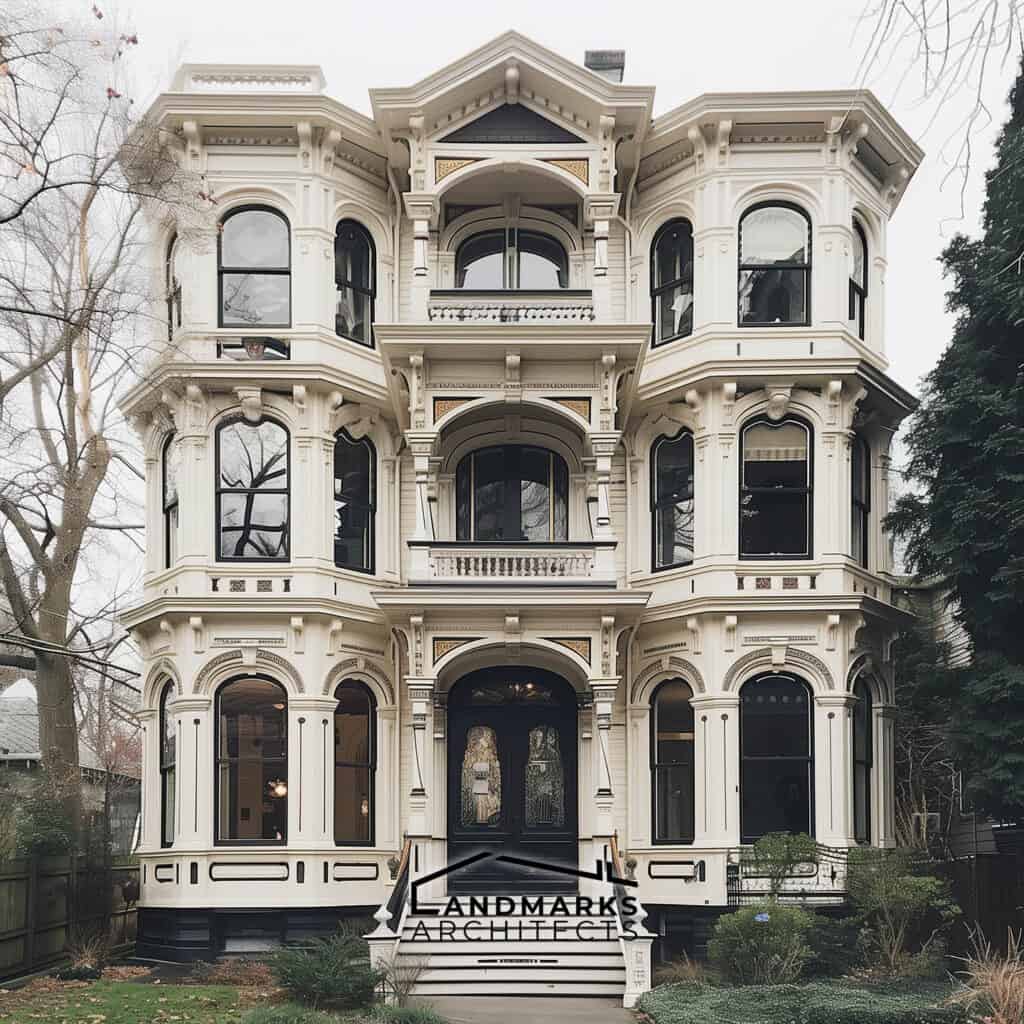
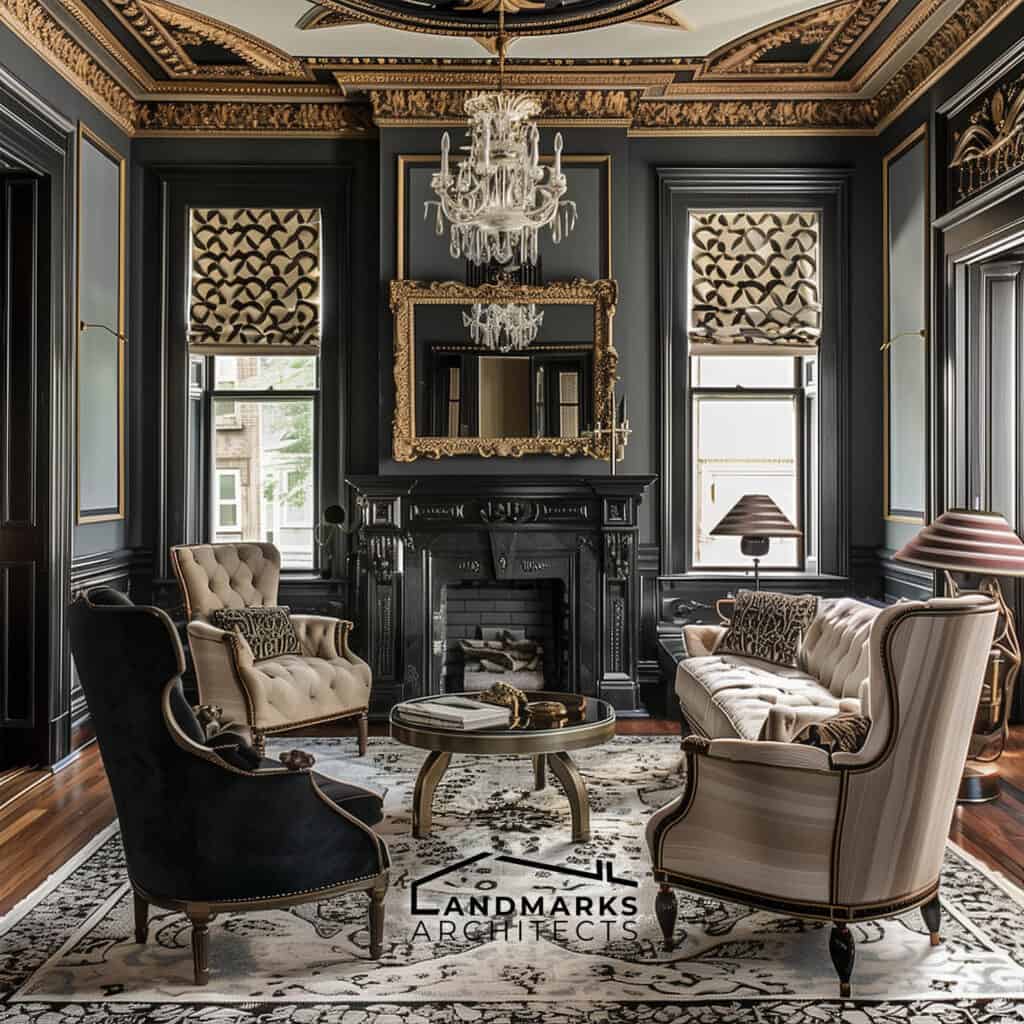

Are you captivated by the charm of historic architecture but desire the functionality of modern design? As a homeowner or design enthusiast, finding the perfect balance between the ornate elegance of the past and the sleek efficiency of the present can be a challenge. Yet, you’re not alone in this quest.
At Landmarks Architects, we appreciate the timeless beauty of Victorian architecture and the innovations of contemporary design. With our extensive experience, we’re here to help you navigate the fascinating world of modern Victorian architecture, blending the best of both eras to create stunning, practical homes.
In this article, we will explore:
- What is Modern Victorian Architecture? Understanding the blend of Victorian elegance with modern functionality.
- History of Modern Victorian Architecture: Tracing its roots from the Victorian era to its contemporary revival.
- Characteristics of Modern Victorian Architecture: Key features that define this style.
- Modern Victorian Homes: Balancing old-world charm with modern amenities.
- Interior Design in Modern Victorian Homes: Merging classic elegance with modern simplicity.
Ready to transform your living space with the elegance of the past and the innovation of the present? Continue reading to discover how you can achieve a unique and timeless design with modern Victorian architecture.
By following our insights, you’ll be well on your way to creating a home that captures the grandeur of the Victorian era while embracing the simplicity and efficiency of modern design.
1. What is Modern Victorian Architecture?
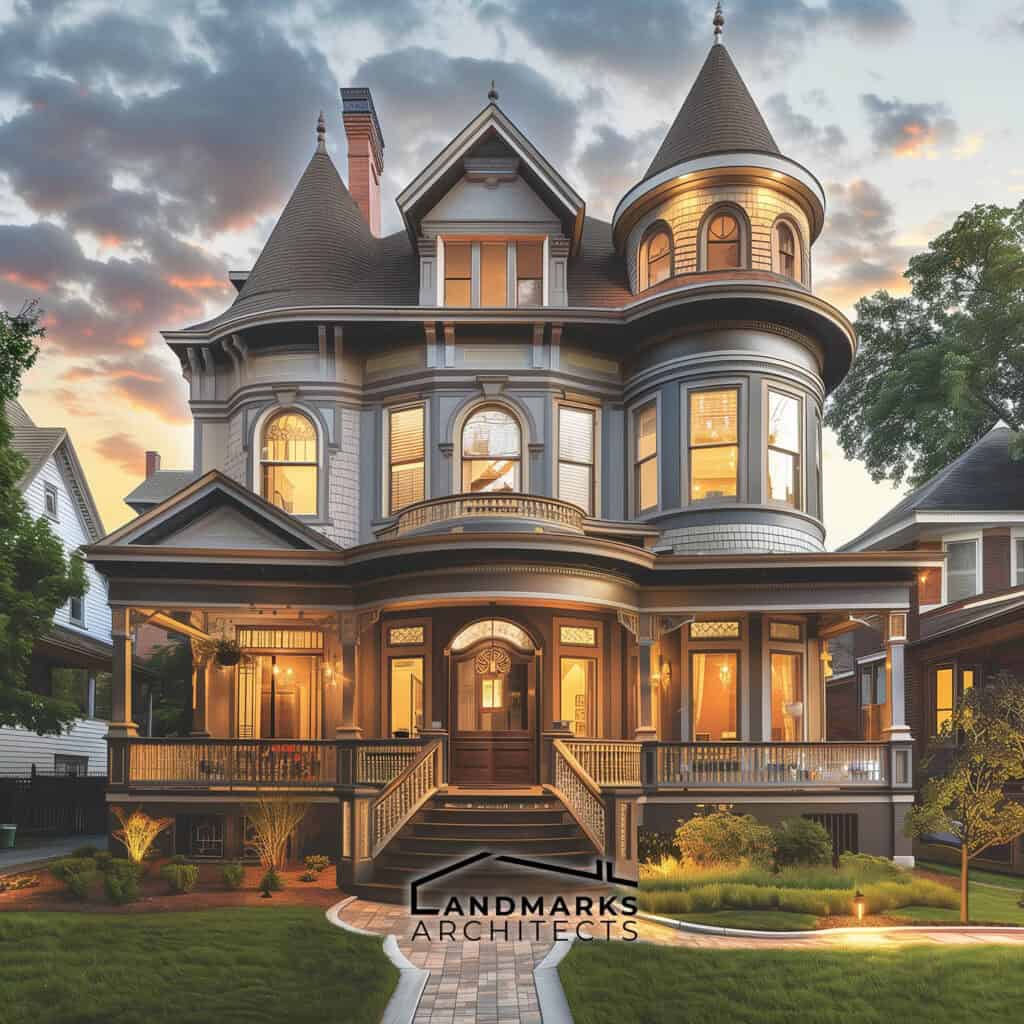
Modern Victorian architecture combines the ornate aesthetic of Victorian style with contemporary design, aiming for a harmonious blend of tradition and modernity. It retains the elegance of the Victorian era while integrating functional and simple modern elements.

This architectural style features natural materials like wood, stone, and brick, along with intricate details such as ornate moldings. Warmth and comfort are emphasized through deep colors and cozy furnishings. Modern Victorian architecture strives to create a timeless and practical style that is both beautiful and functional.
2. History of Modern Victorian Architecture
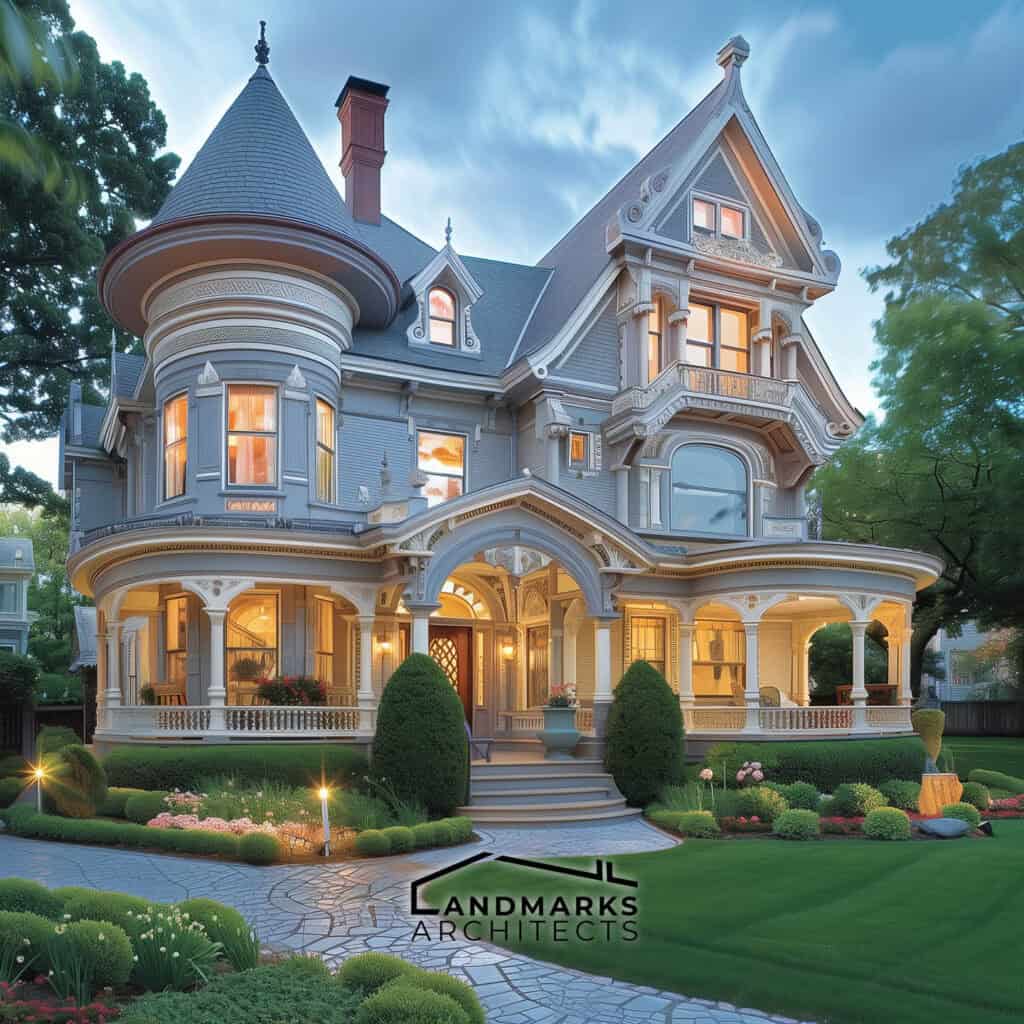
Victorian-inspired modern architecture emerged in the late 20th century, drawing inspiration from the Victorian era of the mid-to-late 19th century. Characterized by Queen Victoria’s reign and the Industrial Revolution, Victorian architecture encompassed various historical styles like Gothic Revival and Queen Anne, known for their ornate designs and intricate details.
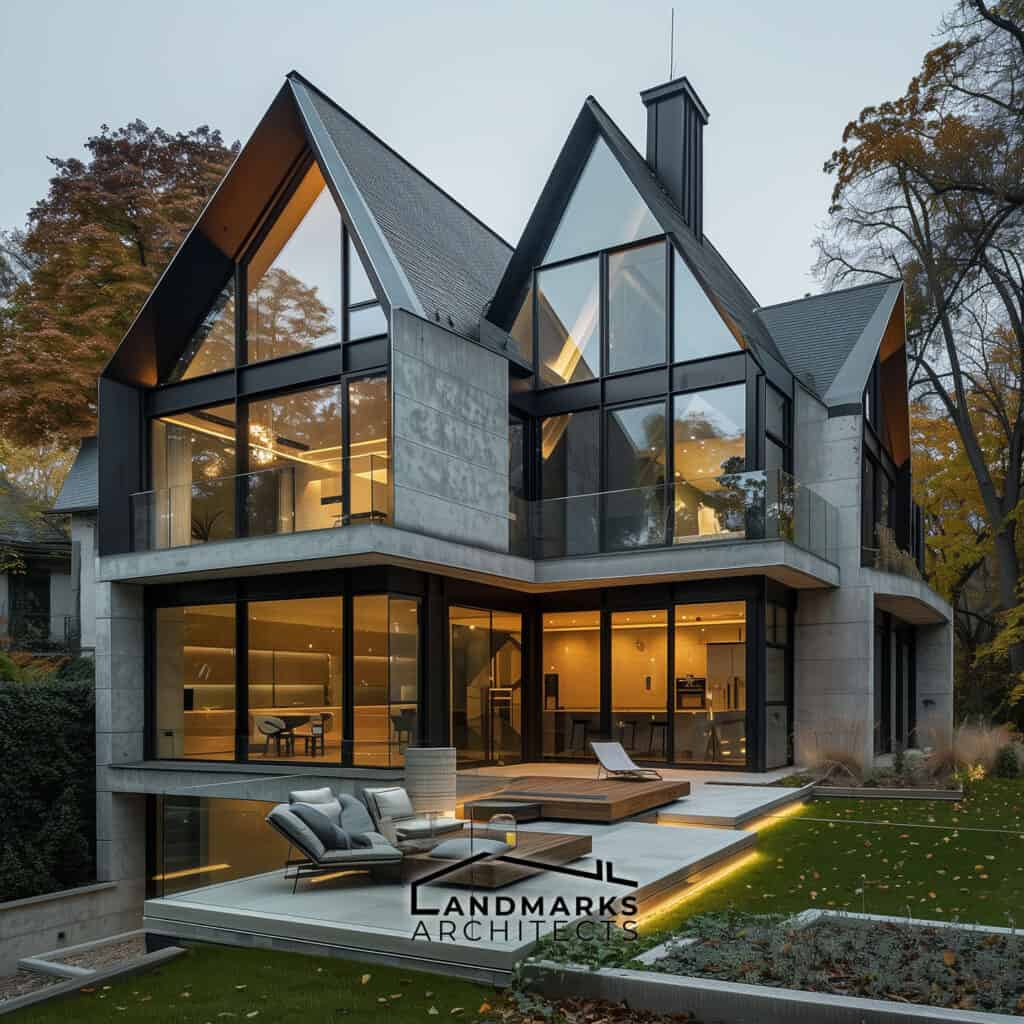
Traditional Victorian buildings featured steep roofs, decorative elements, and innovative use of iron and glass. In the late 20th century, modern architects began integrating Victorian influences into their designs while incorporating new materials like concrete, steel, and glass. This blend allows for larger, more contemporary structures with minimalist interiors and spacious layouts.
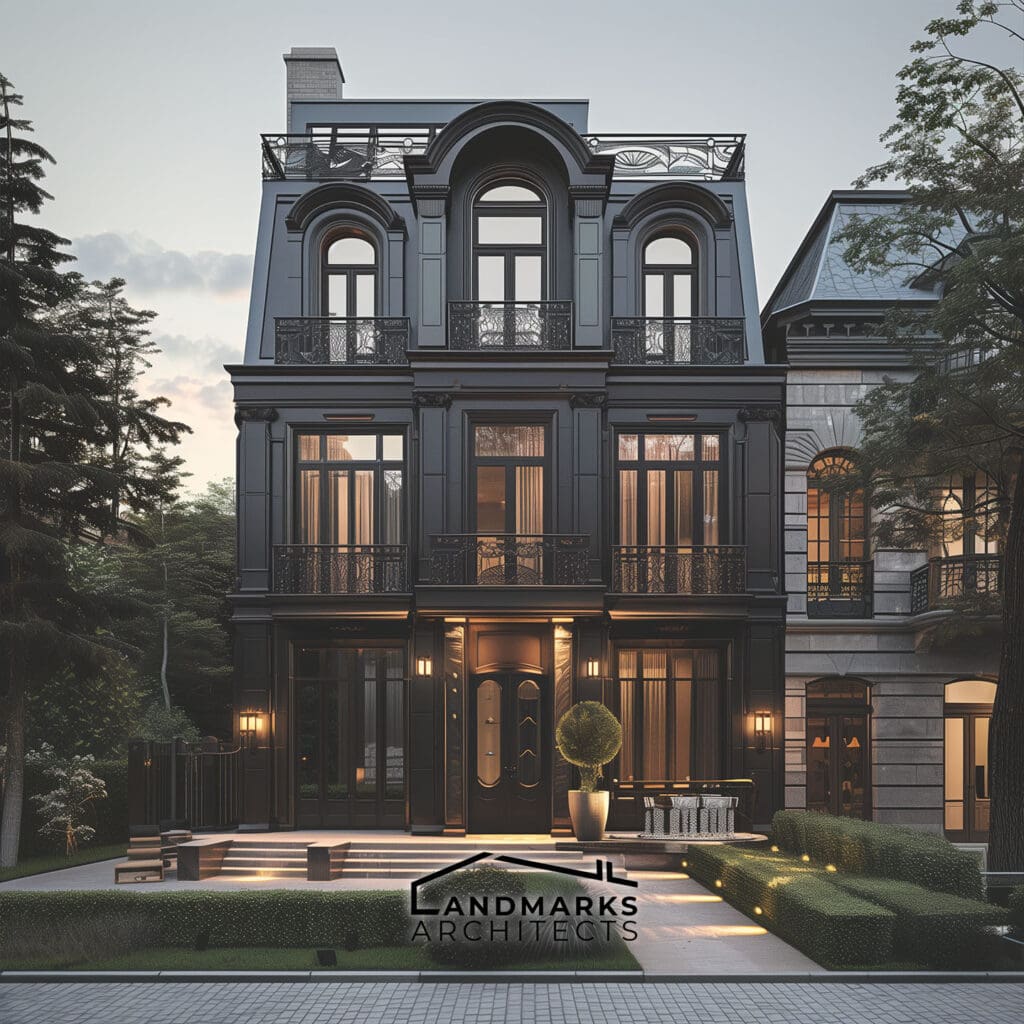
Victorian-inspired modern architecture retains the elaborate ornamentation and attention to detail of its predecessor while adapting to modern construction techniques and materials. It continues to inspire innovative designs that combine historical charm with contemporary functionality and aesthetics.
3. 8 Characteristics of Modern Victorian Architecture
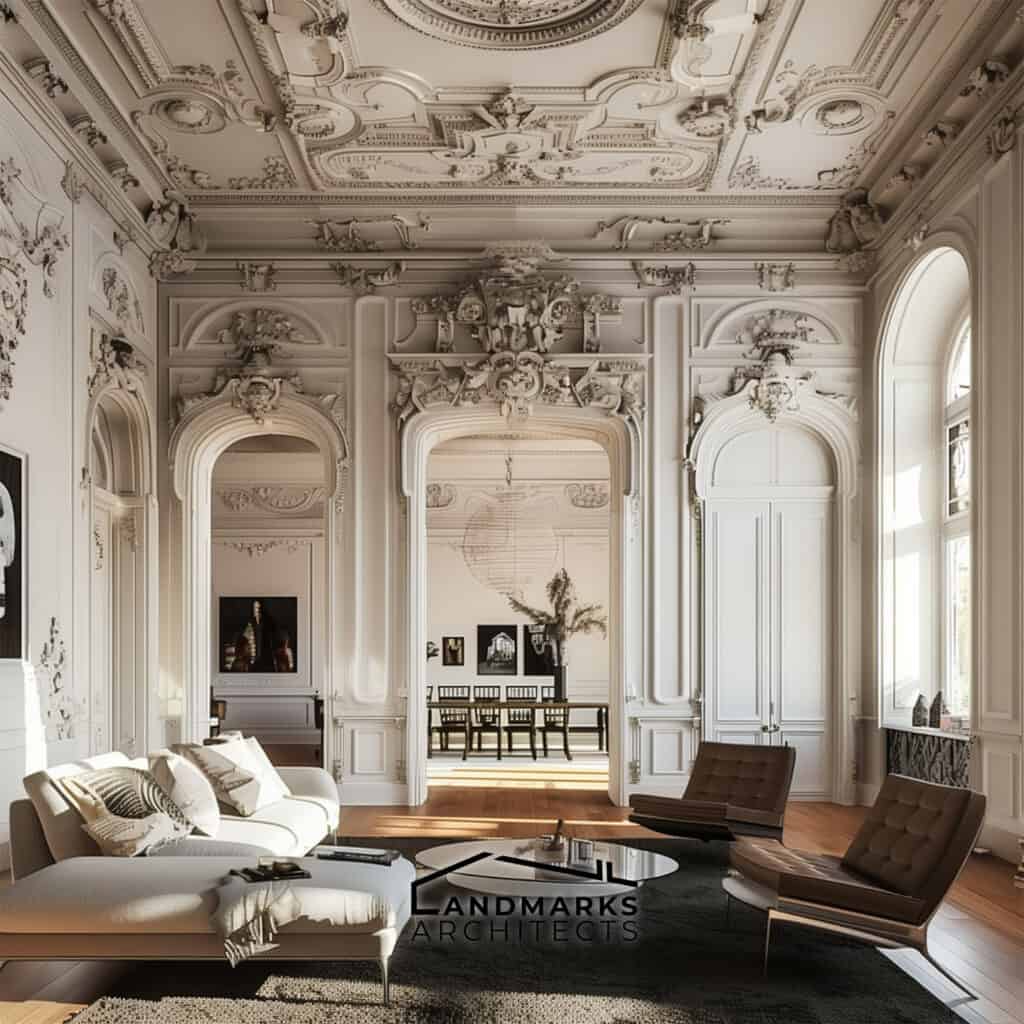
Modern Victorian architecture is a unique blend of the old and the new. It is characterized by the integration of modern materials, simplified ornamentation, open floor plans, neutral color palettes, eclectic interior design, emphasis on natural light, energy efficiency, and respect for historical context.
1. Integration of modern materials
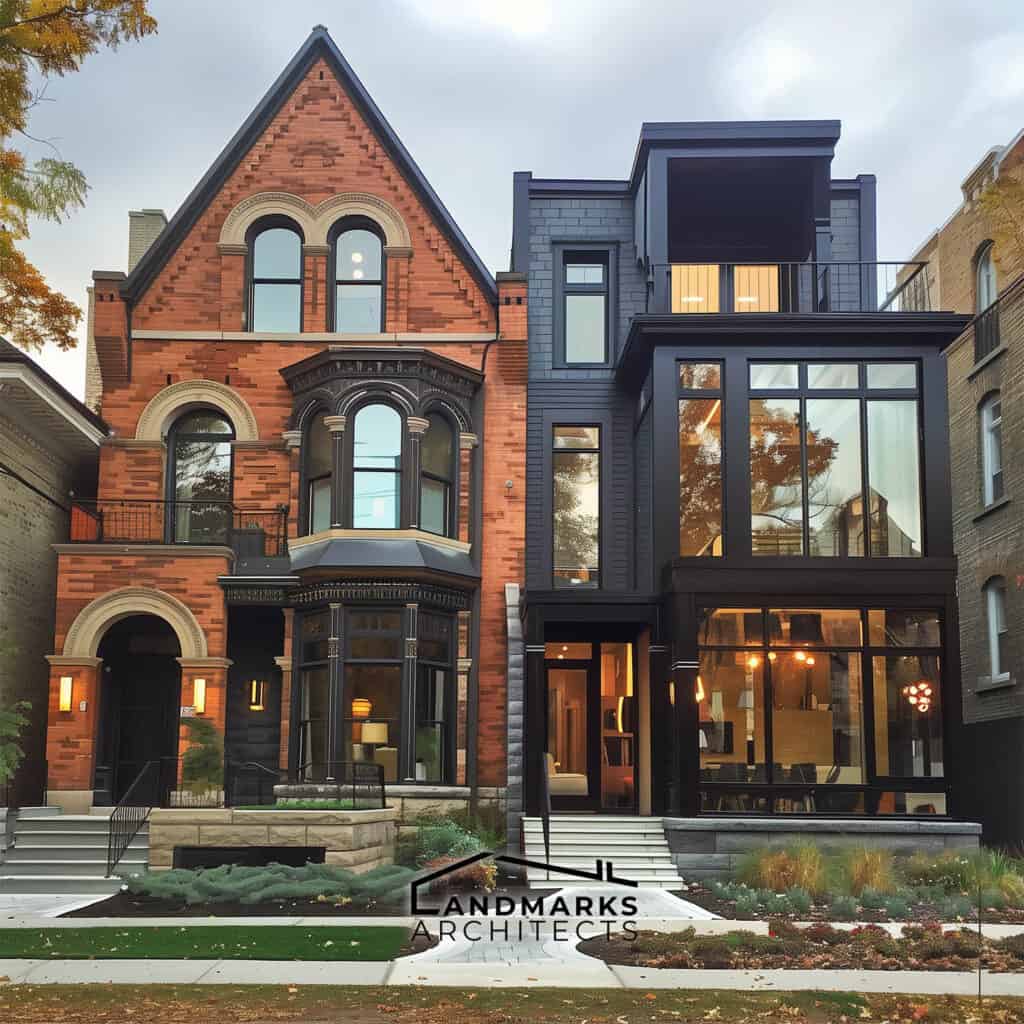
Blending Old and New: Modern Victorian houses use materials like steel, concrete, and glass alongside traditional materials such as brick, stone, and wood. This integration allows for greater flexibility in form and function while maintaining the historical context of the Victorian era.
2. Simplified ornamentation
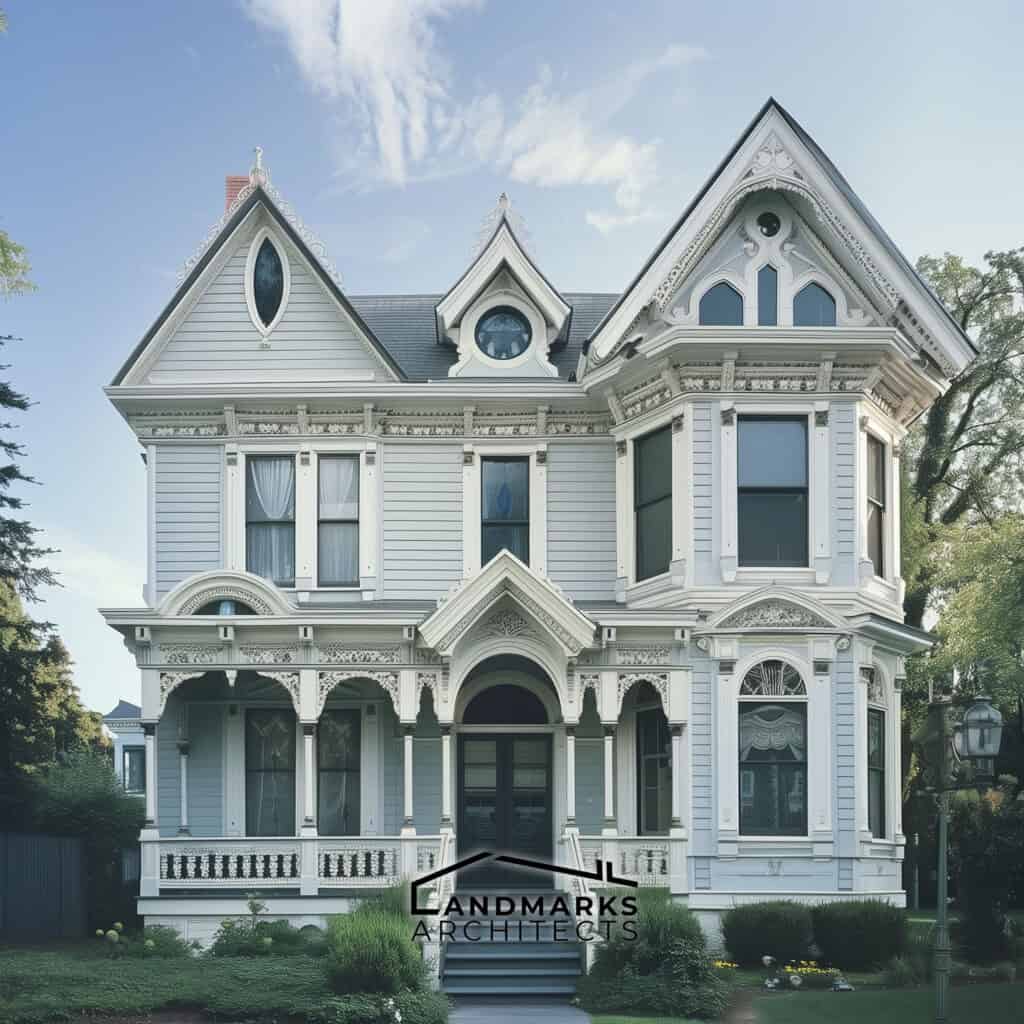
Elegant Simplicity: Modern Victorian architecture emphasizes simplicity and clean lines, moving away from the elaborate ornamentation of traditional Victorian architecture.
3. Open floor plans
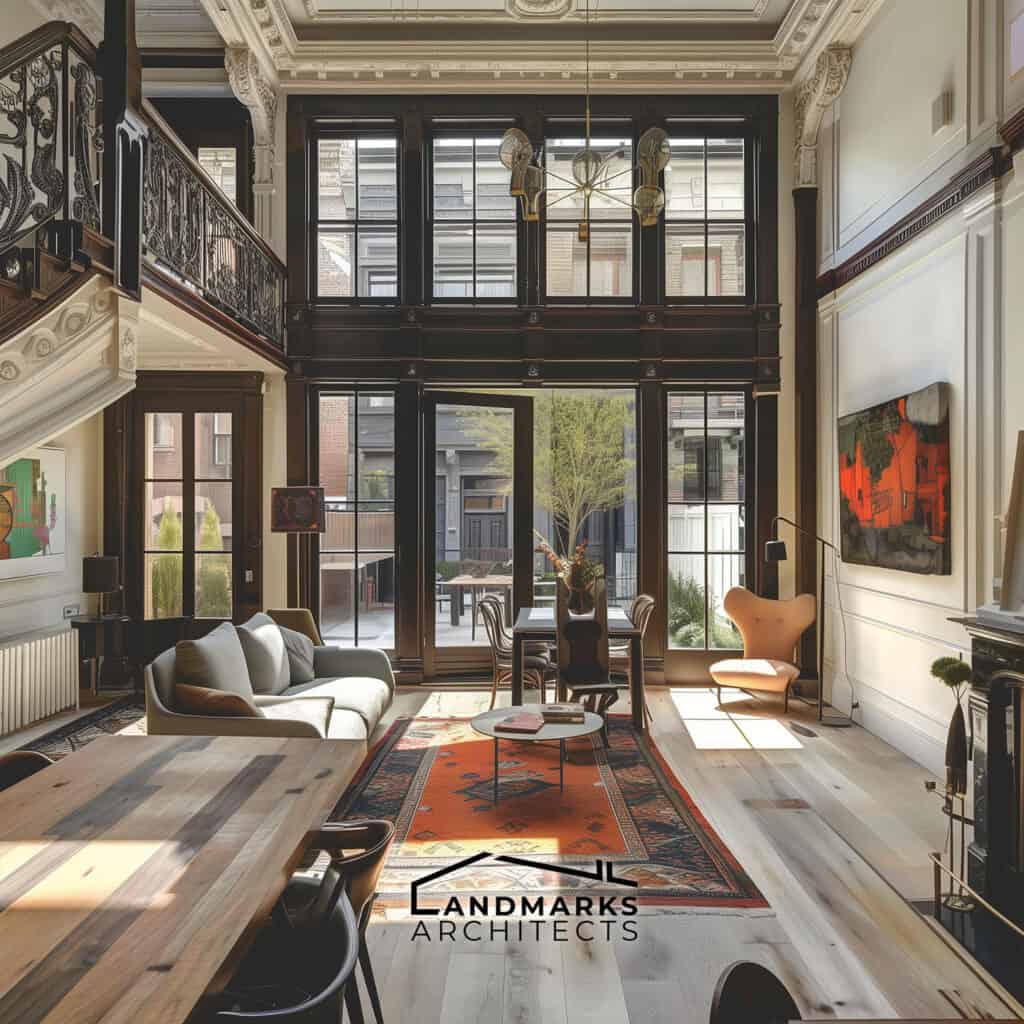
Spaciousness and Flow: Open floor plans are a hallmark of modern Victorian architecture, creating a sense of spaciousness and flow. They allow for more natural light and better circulation.
4. Neutral color palettes
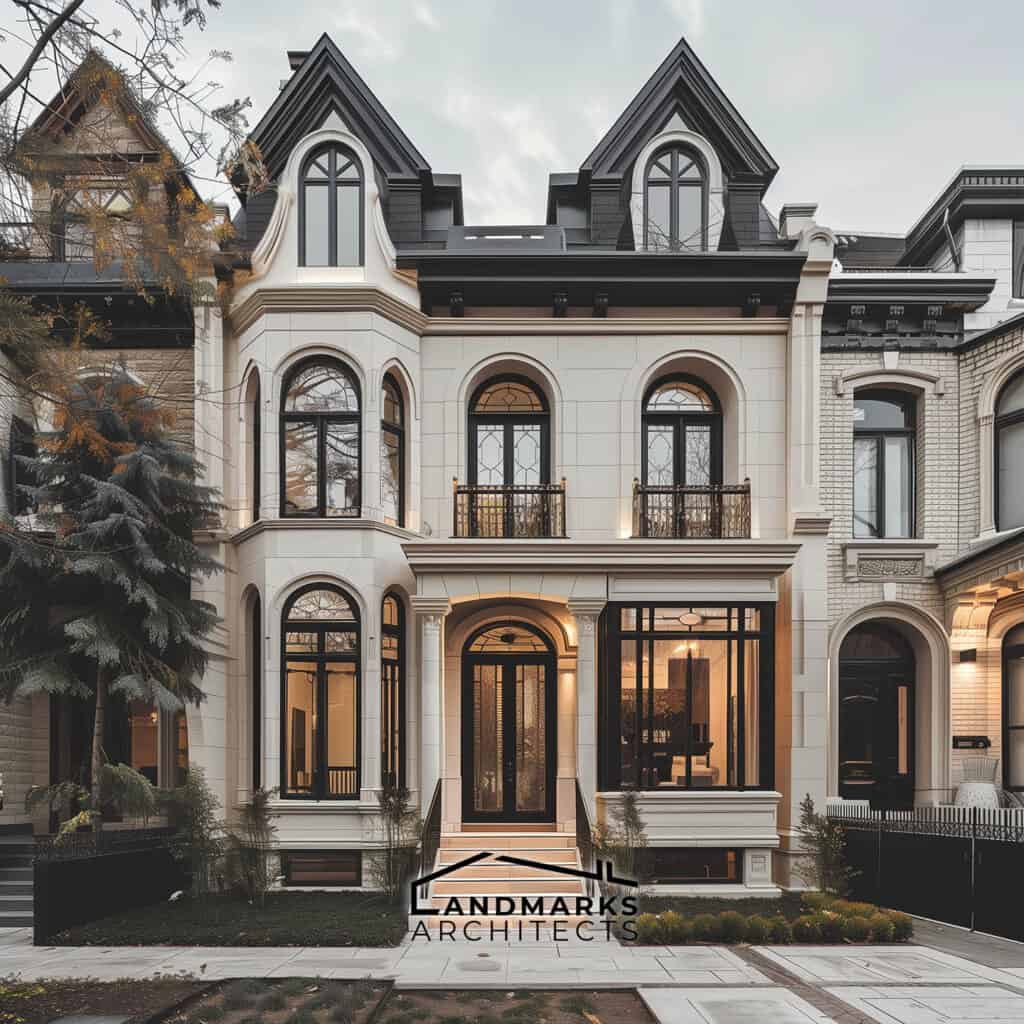
Calm and Sophistication: Modern Victorian houses often feature neutral color palettes, creating a sense of calm and sophistication.
5. Eclectic interior design
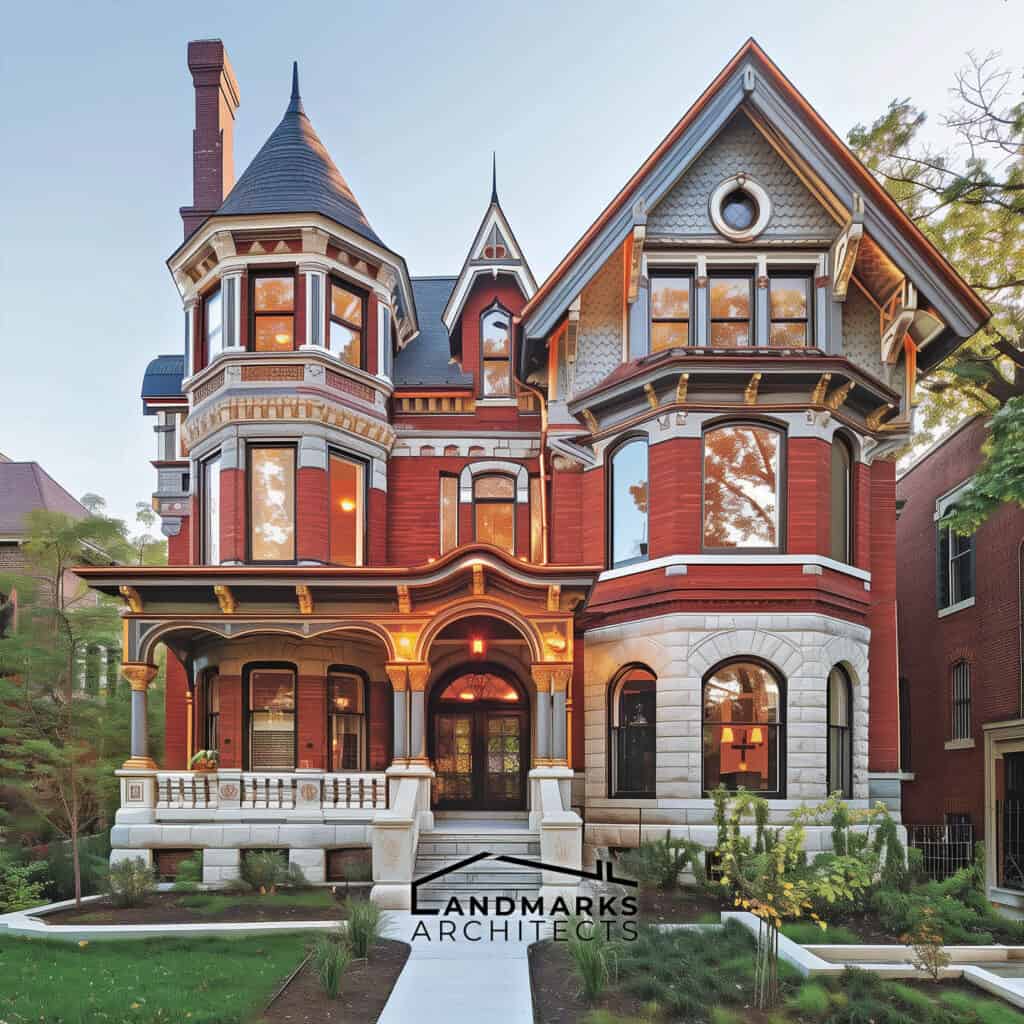
Personalized Style: Modern Victorian architecture often incorporates eclectic design elements, creating a personalized look that reflects the homeowner’s style.
6. Emphasis on natural light
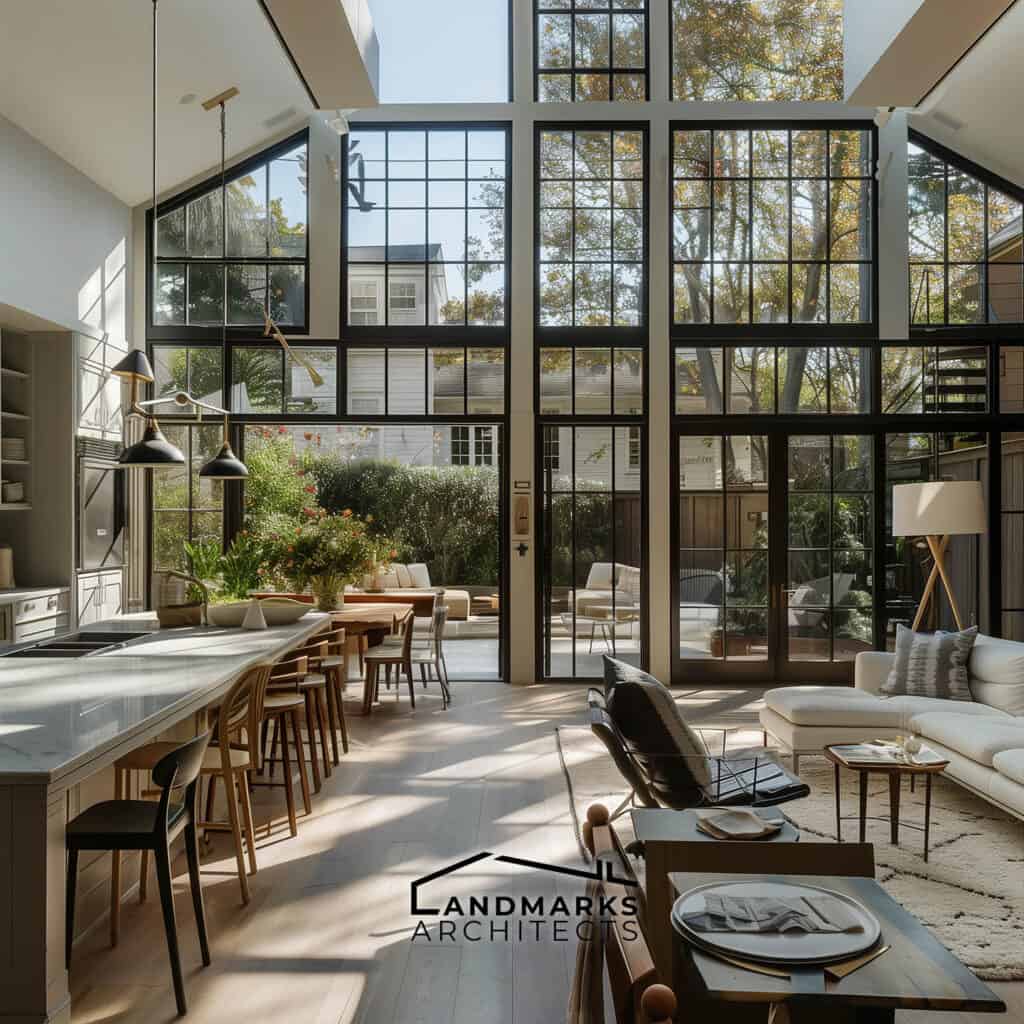
Bright and Airy Spaces: Large windows, skylights, and glass doors are common in modern Victorian houses, allowing ample natural light.
7. Energy efficiency
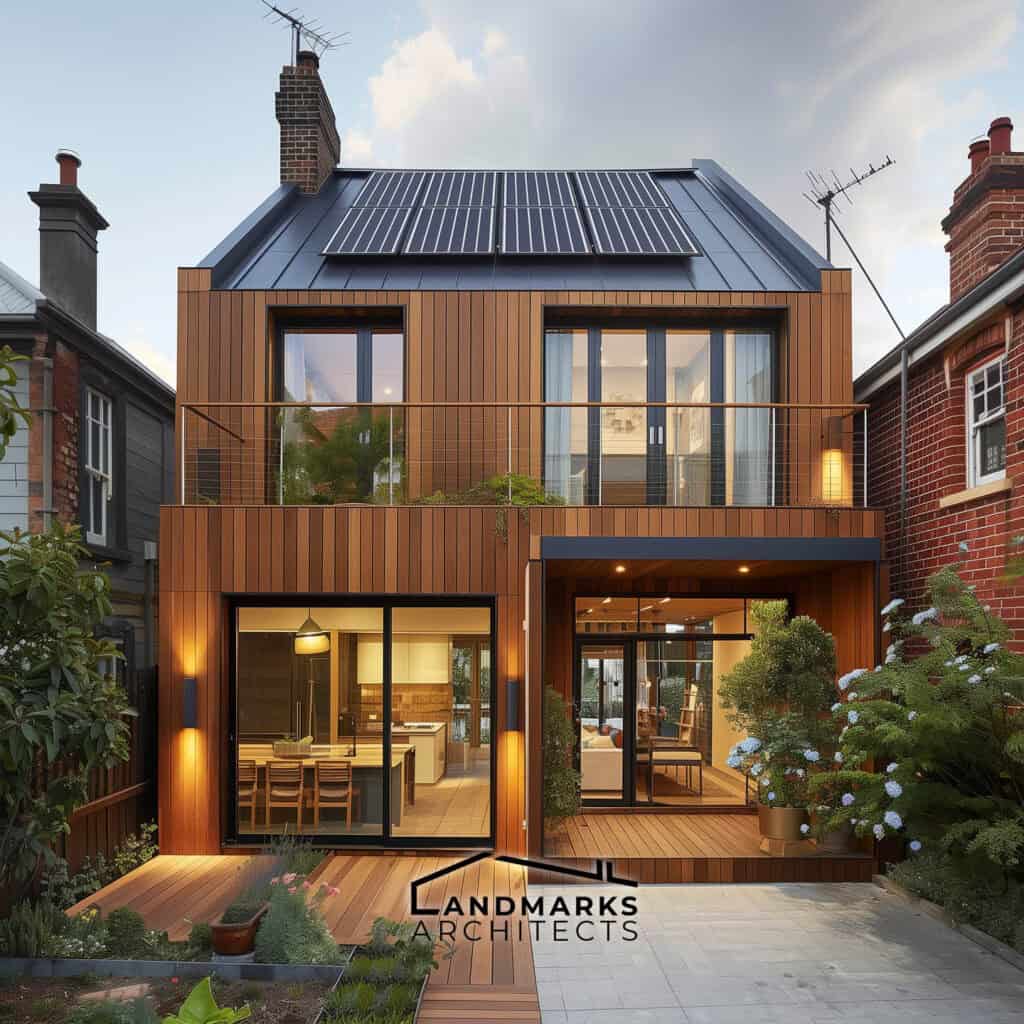
Sustainable Design: Modern Victorian houses often incorporate energy-efficient features like solar panels, double-glazed windows, and insulation.
8. Respect for historical context
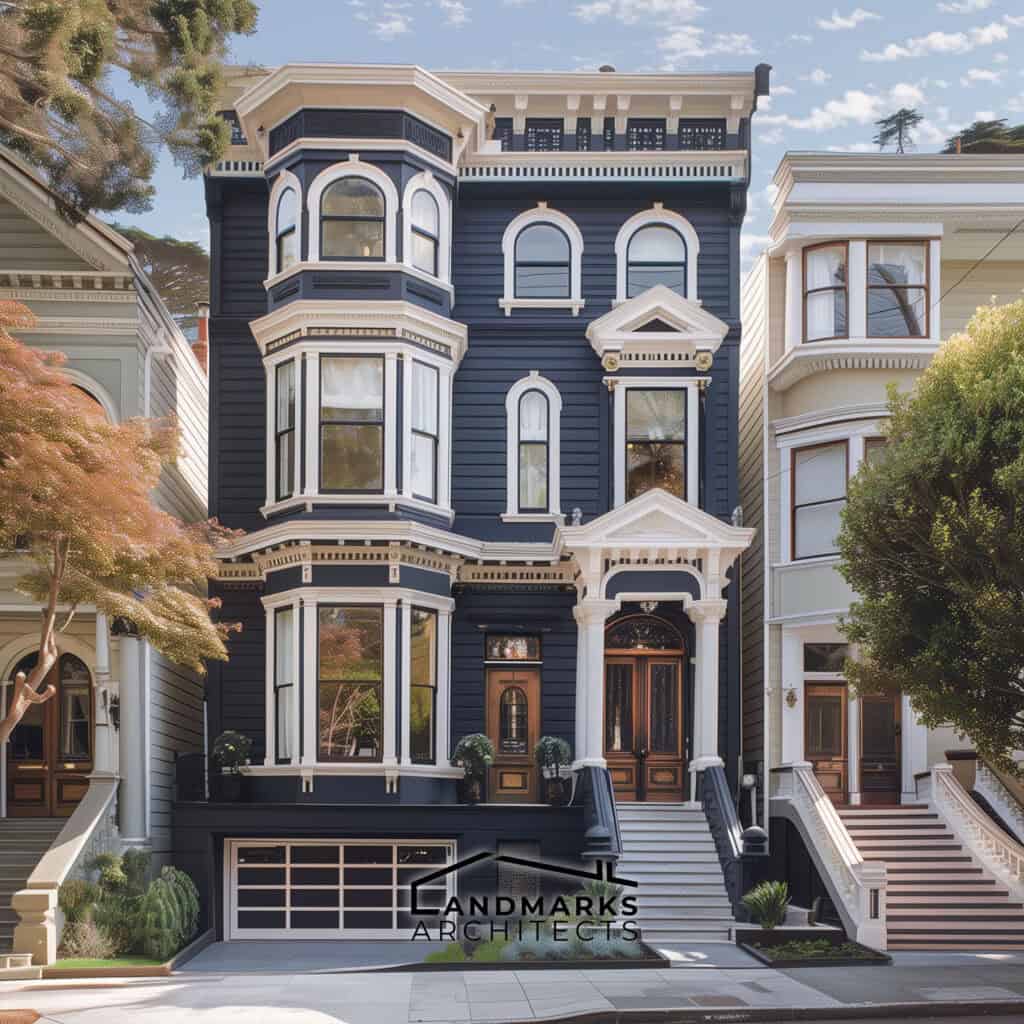
Modern Victorian houses respect the historical context of the Victorian era while incorporating modern design elements. They preserve original architectural features and incorporate design elements that pay homage to the Victorian era.
4. Modern Victorian Homes
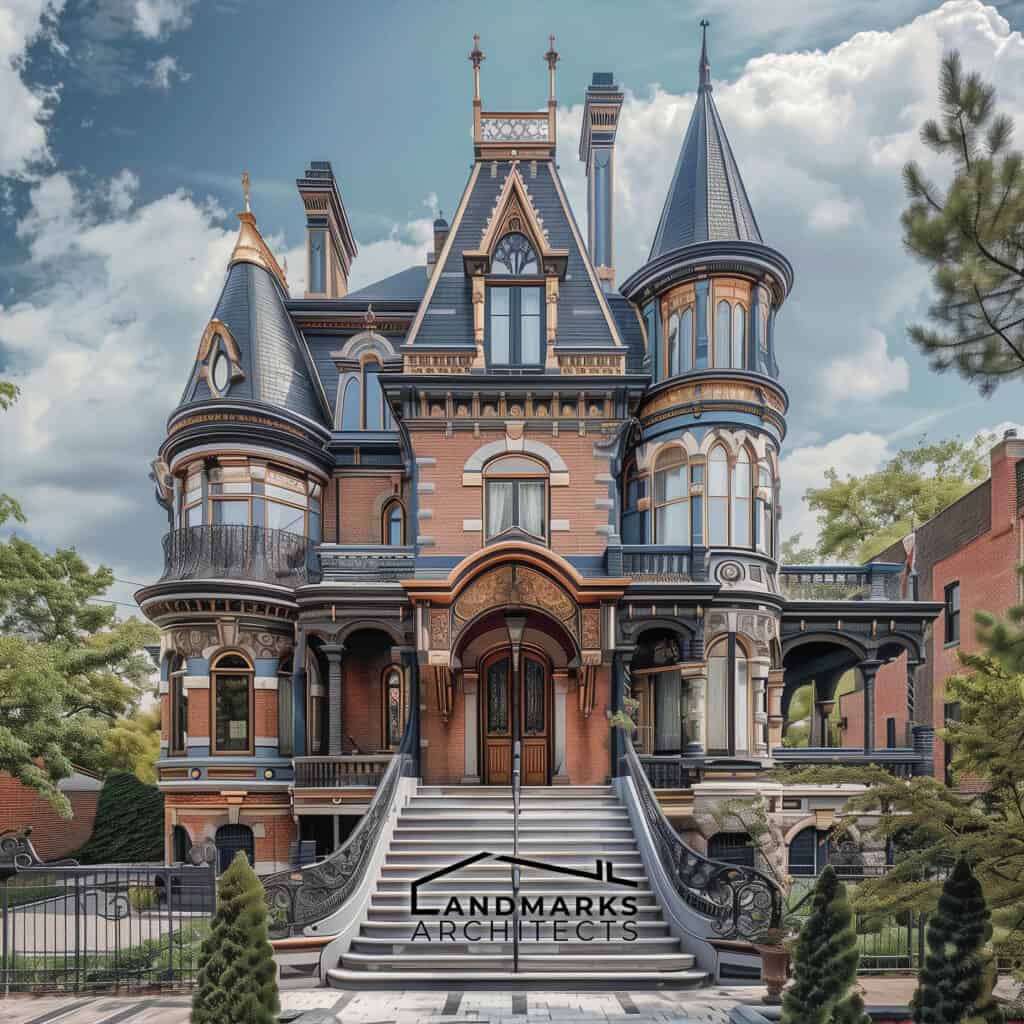
Modern Victorian homes blend the elegance and charm of the past with the clean lines and simplicity of the present. Built between 1830 and 1910, Victorian homes are known for their ornate details, colorful exteriors, and unique features such as turrets and wrap-around porches.
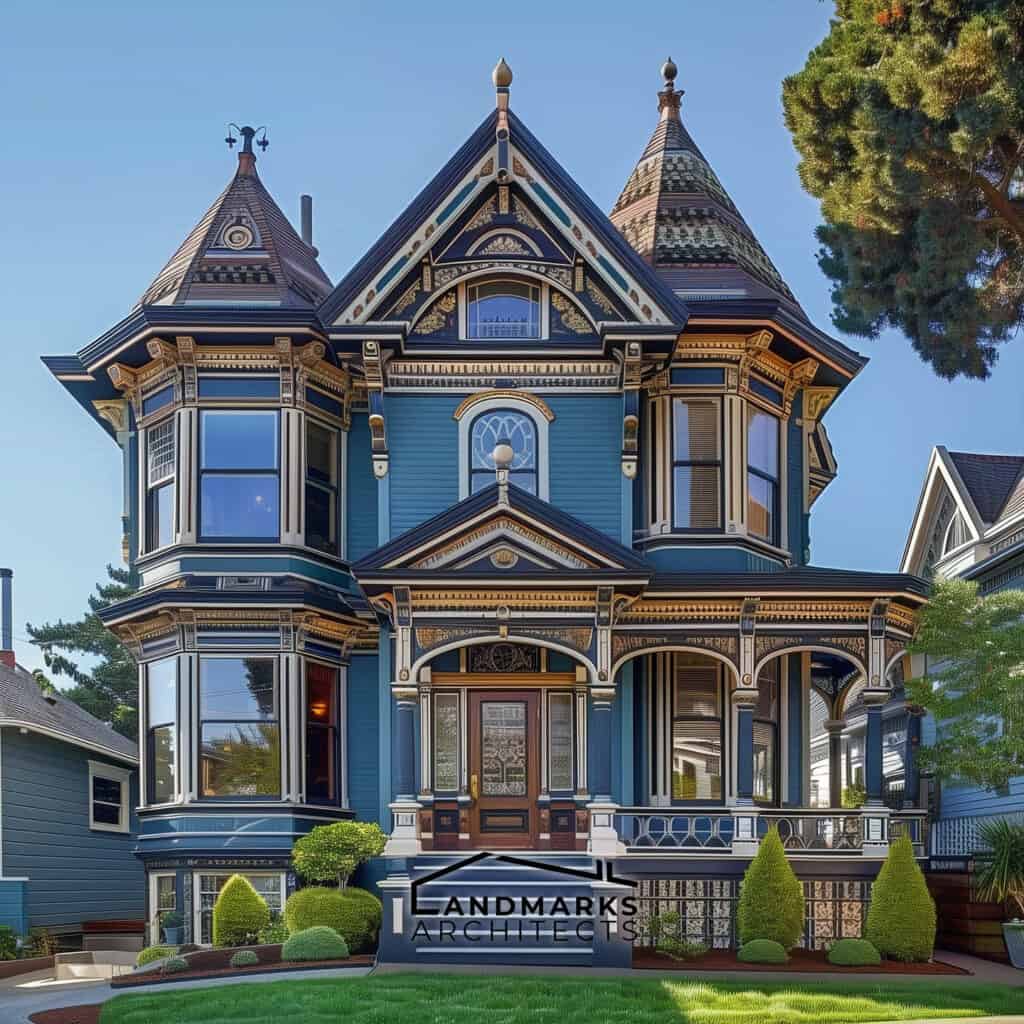
Old Victorian homes in good condition are highly sought after for their historical significance and architectural beauty. However, restoring these homes can be expensive and time-consuming. Modern Victorian homes offer a solution by retaining the charm and character of Victorian homes while incorporating modern conveniences and design elements. They may feature open floor plans, large windows, and minimalist furniture complementing intricate Victorian wallpaper designs.
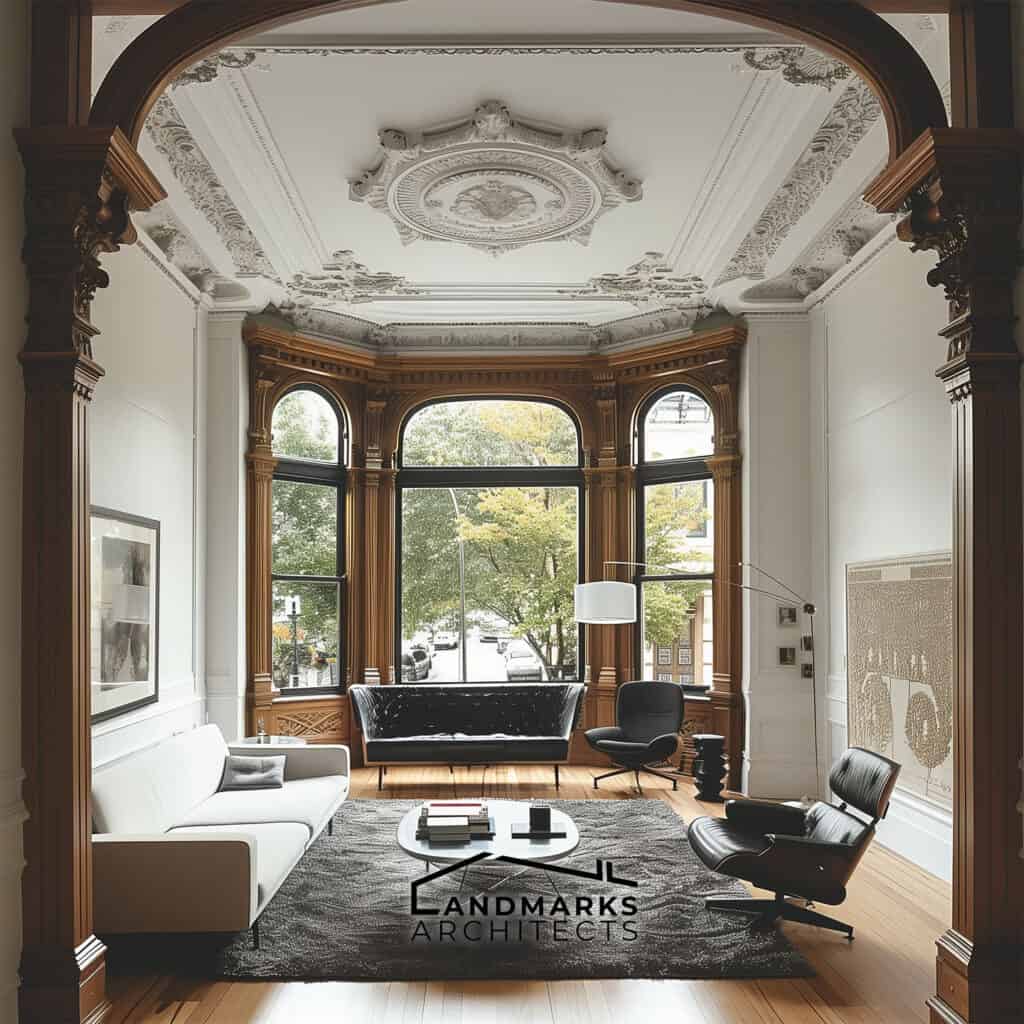
When designing a modern Victorian home, it is important to strike a balance between old and new by incorporating Victorian details such as molding, wainscoting, and ceiling roses while using modern materials and finishes.
5. Interior Design in Modern Victorian Homes
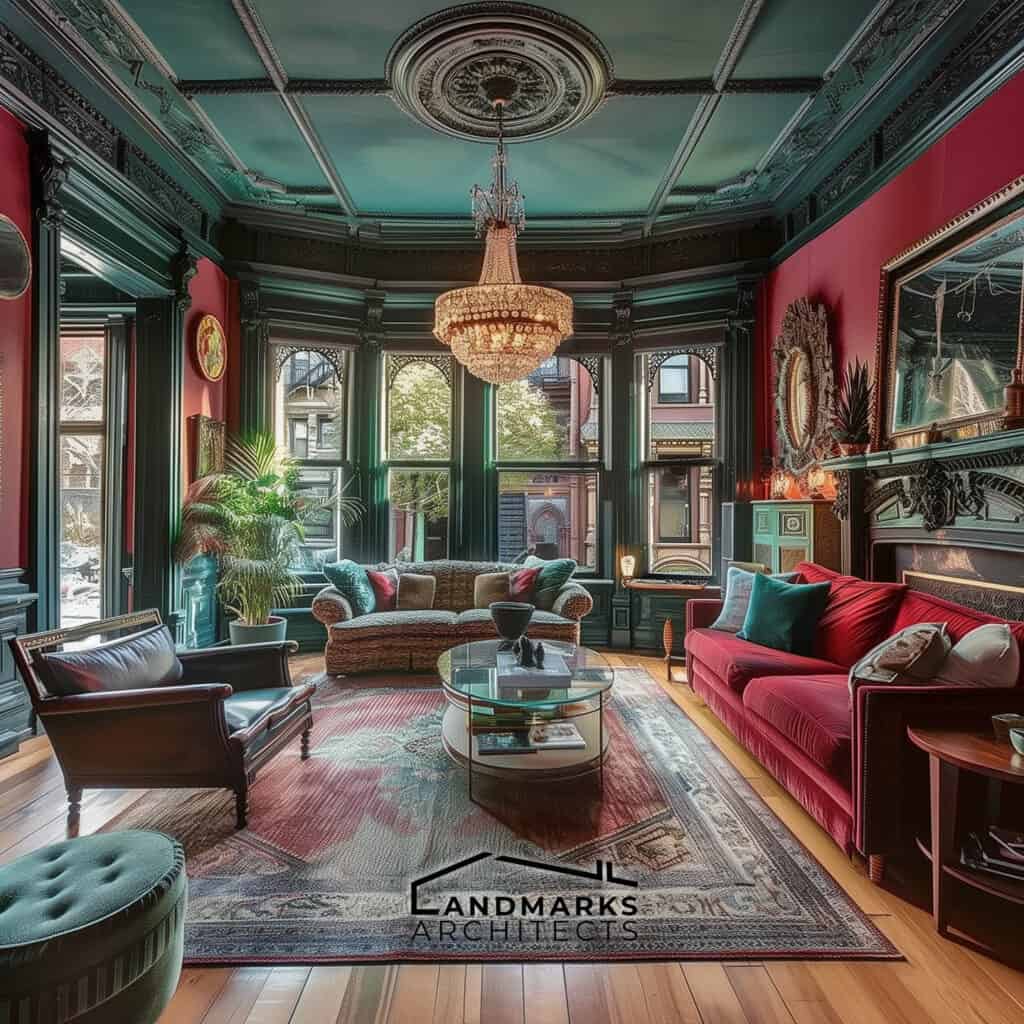
Modern Victorian architecture emphasizes the beauty and practicality of the Victorian era while incorporating modern elements. The interior design of modern Victorian homes is no exception. The use of bay windows, jewel tones, and mansard roofs are just some of the elements that make these homes stand out.
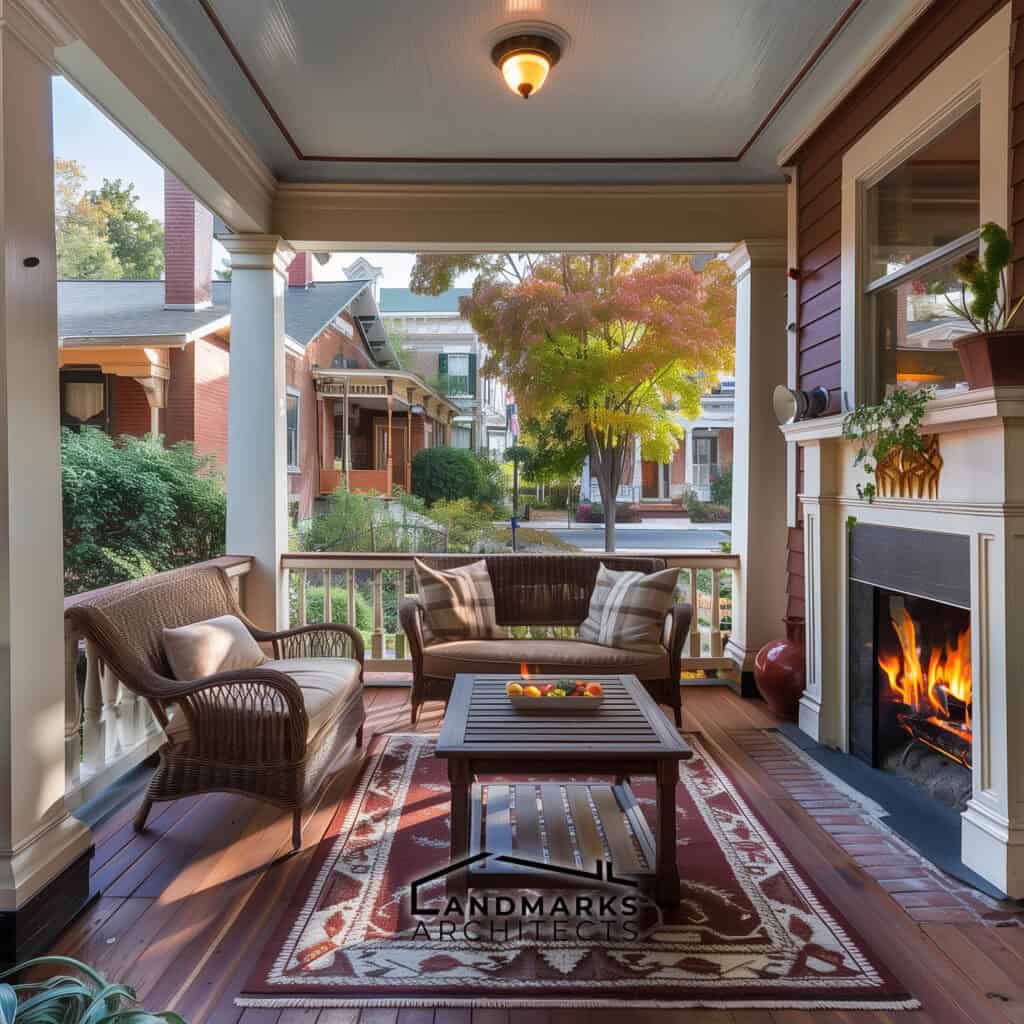
The first floor of a modern Victorian home typically features a front porch or porches that overlook the street. The porch is a great place to relax and enjoy the view. Fireplaces are also common in modern Victorian homes, adding warmth and charm to the living space.

The ceiling, walls, and floors of a modern Victorian home are often adorned with intricate details that add to the overall charm and scale of the home. The woodwork is often a standout feature, with restorations or additions made to keep the details of the original construction intact.
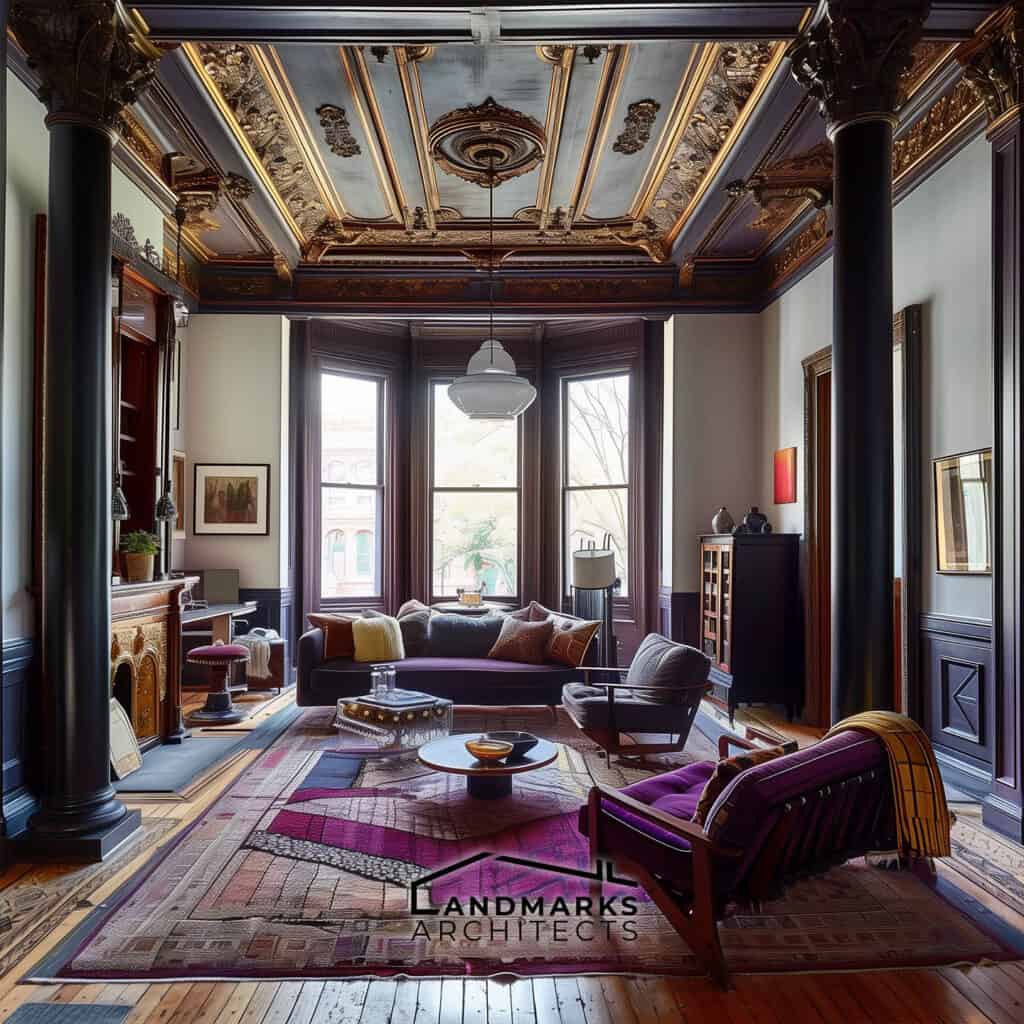
Contrast is also an important element in modern Victorian interior design. The use of jewel tones against neutral backgrounds creates a dramatic effect. Furnishings are often a mix of modern and antique pieces, further emphasizing the contrast between old and new.
5 Notable examples
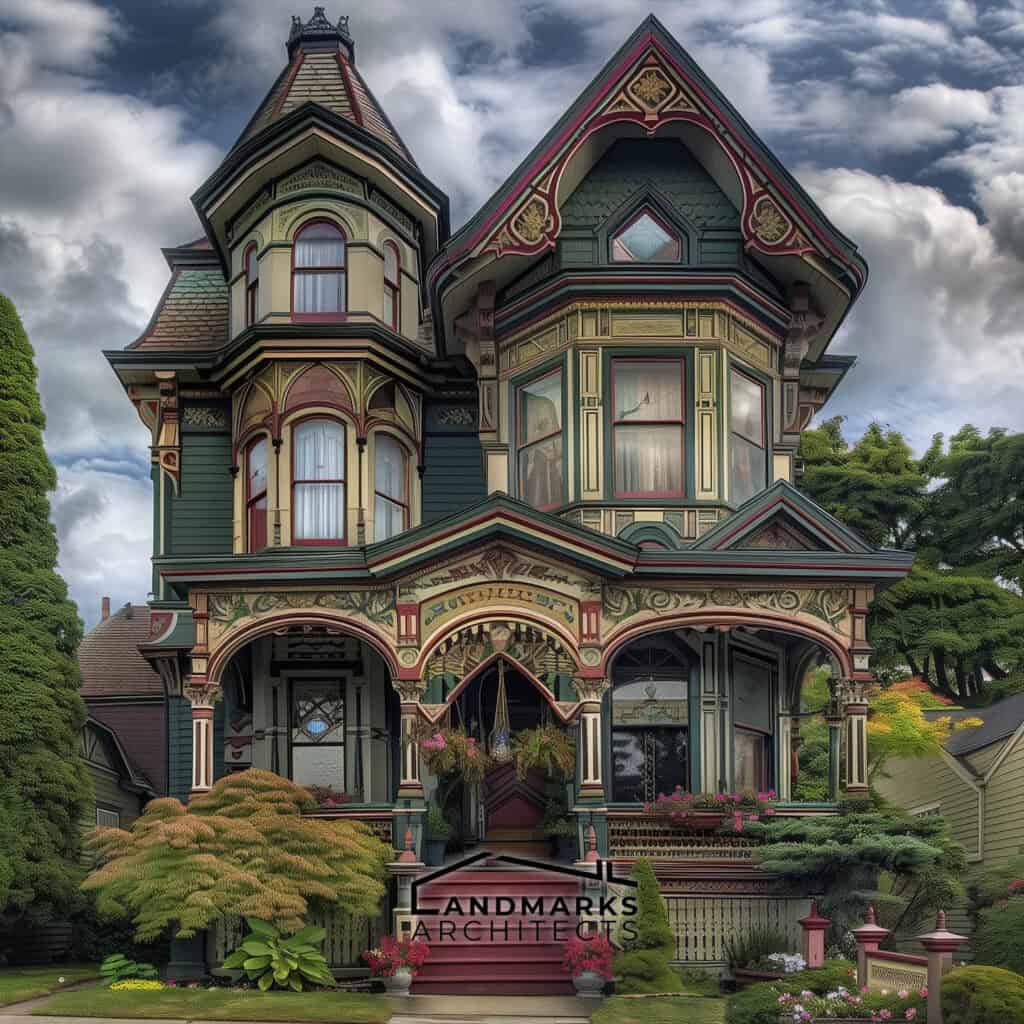
1. St. Pancras International Railway Station
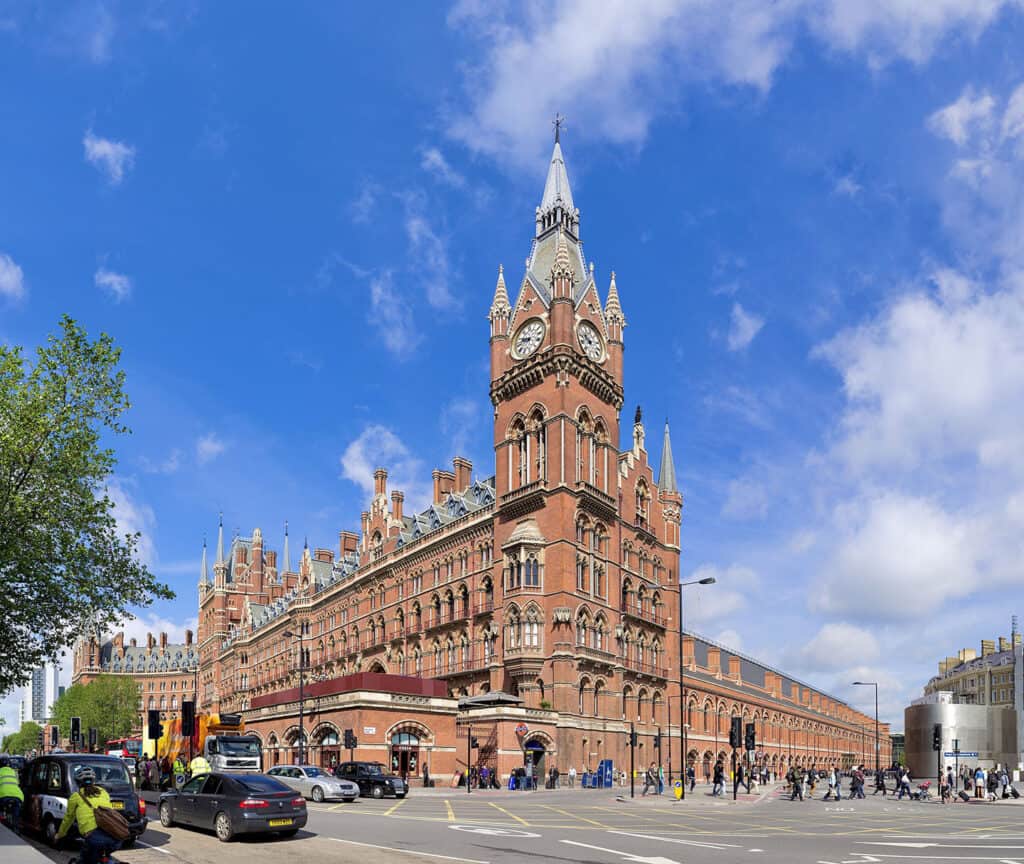
St. Pancras railway station in London, completed in 1868, exemplifies Victorian Gothic Revival architecture with its red-brick façade and intricate detailing. Modern refurbishments from 2001 to 2007 preserved its historical charm while integrating contemporary amenities, including the Eurostar terminal, showcasing a harmonious blend of old and new.
2. The St. Pancras Renaissance Hotel, London, England
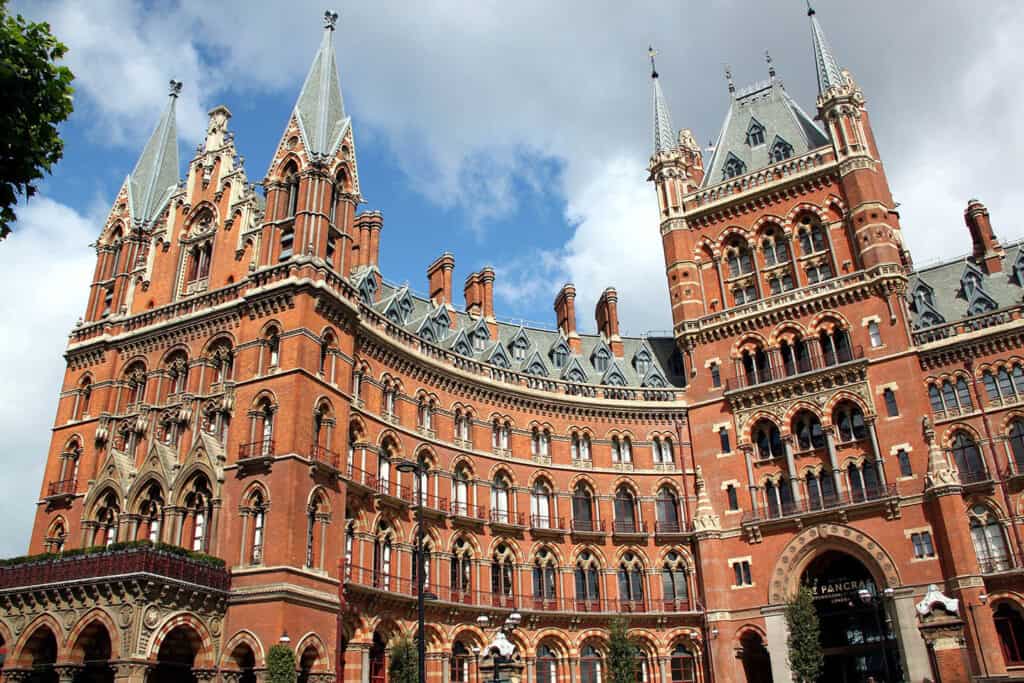
The St. Pancras Renaissance Hotel in London, England, is a stunning example of Victorian architecture with a modern twist. The exterior features a grand scale, with a striking red brick facade and intricate detailing. The interior is equally impressive, with a mix of modern furnishings and Victorian charm. The hotel boasts a grand staircase, high ceilings, and ornate fireplaces.
3. Royal Albert Hall, London, UK
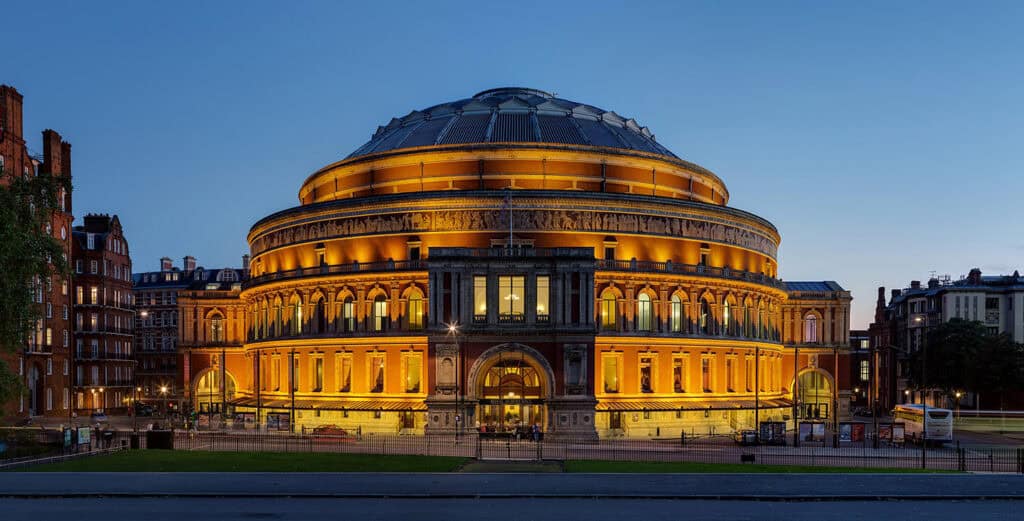
Built-in 1871 and designed by Francis Fowke and Henry Scott, the Royal Albert Hall is an iconic example of Victorian architecture in the form of a grand concert hall. Its distinctive domed roof and red-brick exterior exemplify the Victorian penchant for monumental public buildings. The hall’s enduring presence has inspired modern architects to design large-scale public venues that balance aesthetics with functional demands.
4. Natural History Museum, London, UK
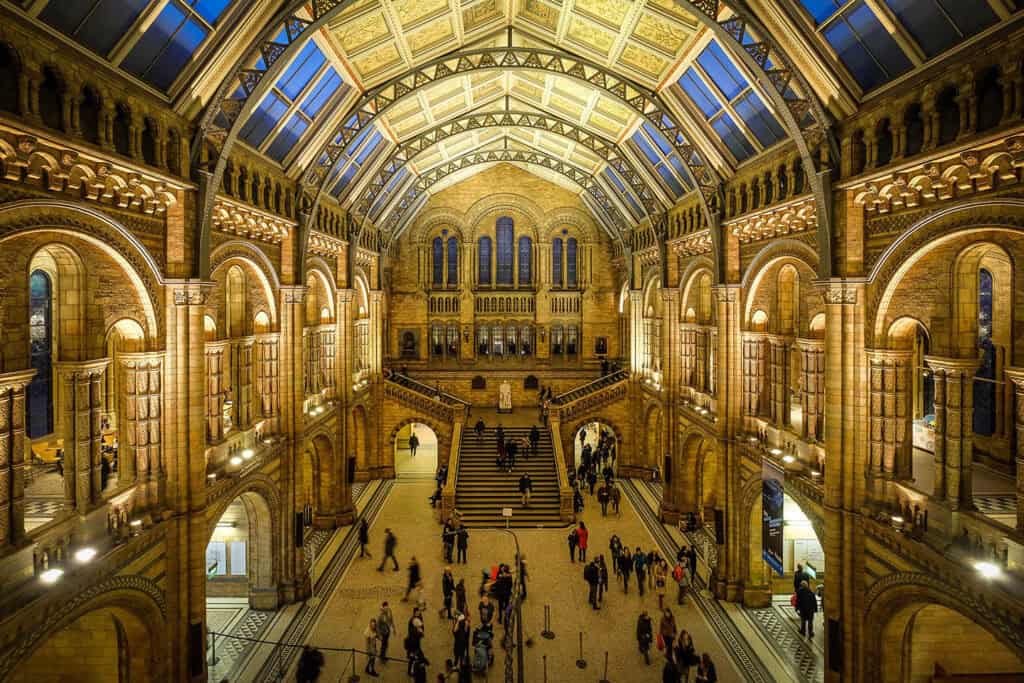
Completed in 1881 and designed by Alfred Waterhouse, the Natural History Museum showcases Victorian architecture‘s fusion of scientific curiosity and architectural grandeur. Its terracotta façade, elaborate carvings, and cathedral-like interiors have influenced modern architects in designing institutions that symbolize knowledge and cultural heritage, often blending historical features with contemporary updates.
5. Manchester Town Hall, Manchester, UK
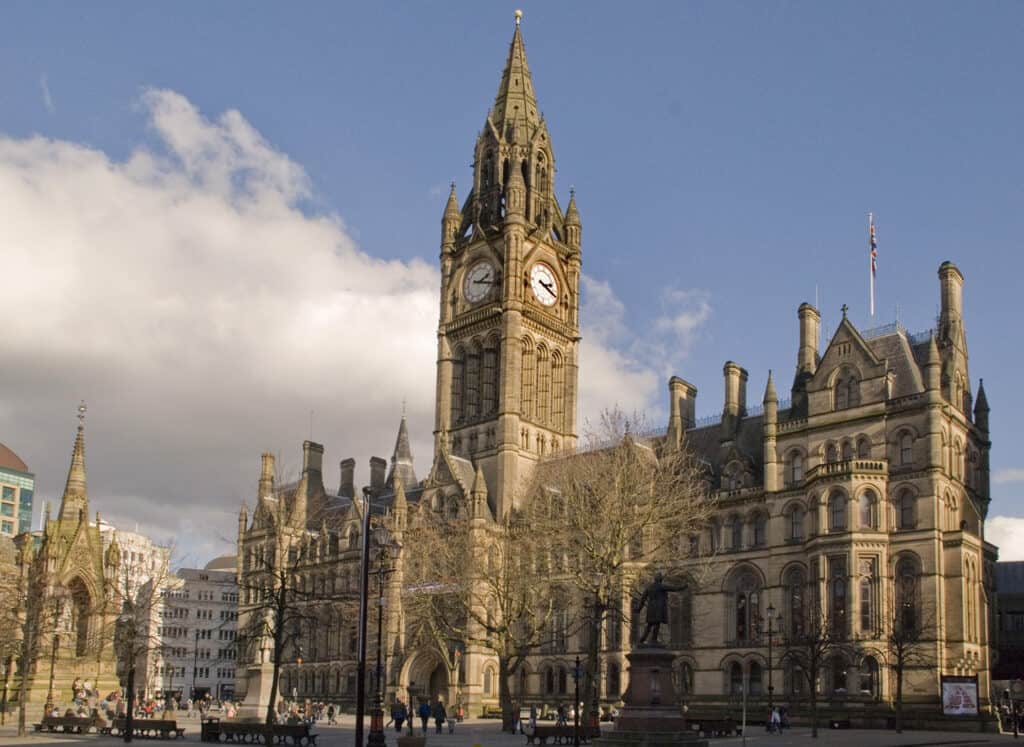
Designed by Alfred Waterhouse and completed in 1877, Manchester Town Hall is a prime example of Victorian Gothic Revival architecture. Its imposing clock tower, intricate stonework, and richly decorated interiors set a precedent for municipal buildings across Britain. The town hall’s influence can be seen in modern civic architecture that emphasizes civic pride through architectural expression and public accessibility.
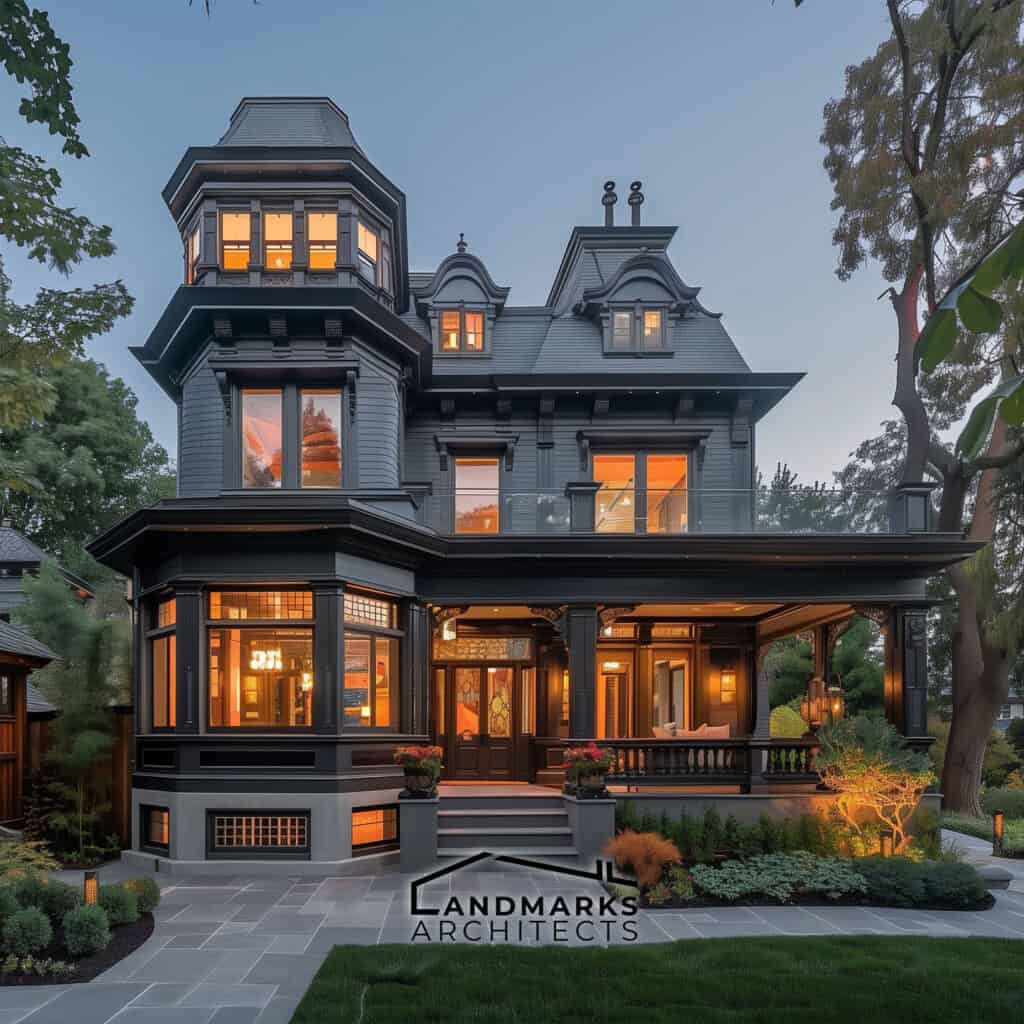
Our exploration of modern Victorian architecture reveals a style that harmoniously blends ornate Victorian aesthetics with modern practicality. Key takeaways emphasize the integration of natural materials, open floor plans, and abundant natural light, all tailored to modern living needs.
This architectural approach not only preserves historical elegance but also offers sustainable and versatile solutions for today’s homes. In essence, modern Victorian architecture reimagines classic beauty for the present, promising enduring appeal and functionality.










